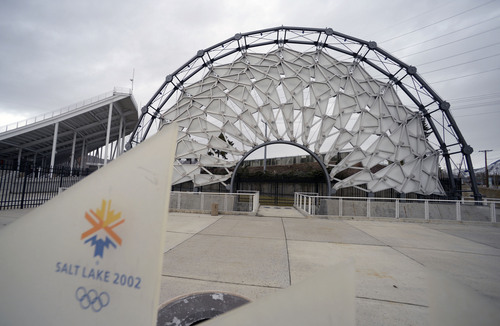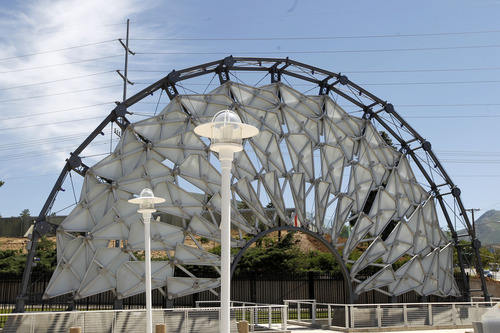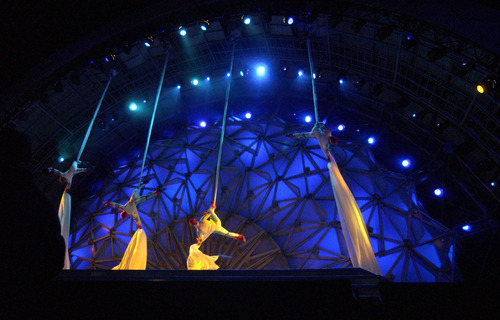This is an archived article that was published on sltrib.com in 2014, and information in the article may be outdated. It is provided only for personal research purposes and may not be reprinted.
Motorists passing Rice-Eccles Stadium on 500 South may have been alarmed to see part of Utah's Olympic legacy being disassembled Thursday.
Their eyes weren't deceiving them: The Hoberman Arch is being moved, again. But indications are that the 36-feet-high, 72-feet-wide web of bent aluminium will be back on display, eventually.
The University of Utah tweeted adieu to the structure Thursday evening:
Bidding farewell to an old Olympic friend. The Hoberman Arch at Rice-Eccles is moving. (PC: @sltrib) pic.twitter.com/v0lBr1G0qm
— University of Utah (@UUtah) August 1, 2014U. officials stressed to The Tribune that the arch is not being moved in preparation for a stadium expansion. Rather, U. Communications Director Maria O'Mara said, the removal frees up space on the south plaza for game-day activites. The Olympic cauldron will remain undisturbed, and the arch will go to storage for the time being.
O'Mara said the U. will foot the $116,000 bill as the school transfers ownership of the arch to Salt Lake City. The city is not paying any money to obtain the arch from the U.
"They have expressed interest in displaying it downtown," she said.
City spokesman Art Raymond did not immediately return a request for comment Thursday night.
The Tribune reported last June that the university had interest in moving Hoberman Arch to make way for a proposed 11,000-seat expansion outlined in a 2022 Olympics bid proposal.
During the 2002 Olympics, the arch was located on the medals plaza stage at South Temple and 300 West. After the Games, the Salt Lake Organizing Committe donated the arch to the U., and it was moved to the stadium site.
mpiper@sltrib.com
Twitter: @matthew_piper









